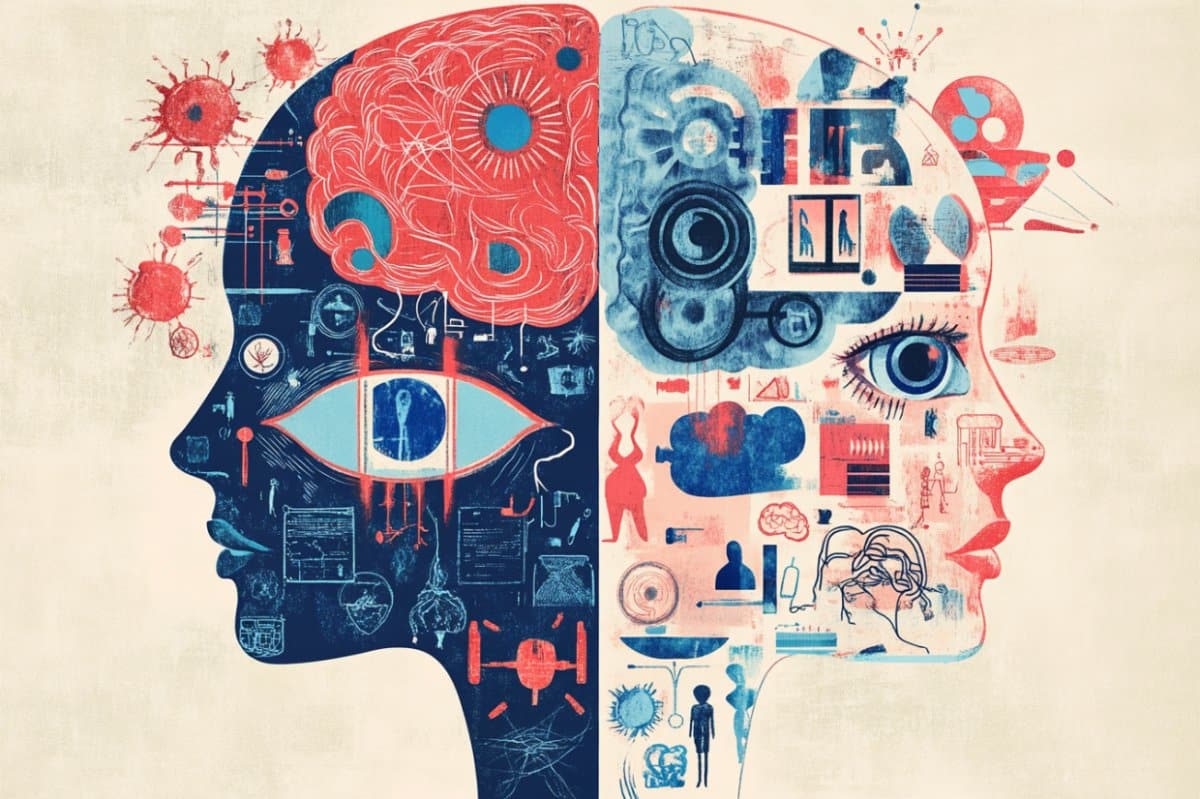Summary: A new meta-analysis highlights a strong connection between early-onset neurodevelopmental disorders with linguistic symptoms and left- or mixed-handedness. Disorders like dyslexia, autism, and schizophrenia were notably associated with higher rates of non-right-handedness, unlike later-onset conditions such as depression.
Researchers suggest that this overlap is rooted in shared early brain developmental processes, as both handedness and language are determined during early stages. These findings emphasize how the timing and nature of developmental disruptions may shape handedness patterns in affected individuals.
Key Facts:
- Higher Left/Mixed-Handedness: Dyslexia, autism, and schizophrenia show significantly increased rates of left- and mixed-handedness.
- Early Manifestation Is Key: The link is strongest in disorders that emerge early in life and involve language impairments.
- No Link In Later Disorders: Conditions with later onset, like depression, do not show this association.
Source: RUB
Linguistic symptoms and an onset early in life: Disorders to which this applies are frequently associated with left-handedness resp. mixed-handedness.
The fact that left-handedness resp. mixed-handedness are strikingly common in patients with certain neurological disorders such as autism spectrum disorders is a frequently reported observation in medical practice.
The reason why handedness is associated with these disorders is probably because both are affected by processes in early brain development. Various studies have explored this link for individual disorders and have sometimes been able to show it, and sometimes not.
A meta-analysis carried out by an international research team from Bochum, Hamburg, Nijmegen and Athens shows that left and mixed-handedness is particularly common in people who suffer from a disorder that manifests itself early in life and is associated with linguistic symptoms. These include dyslexia, schizophrenia and autism.
They published their findings in the journal Psychological Bulletin on May, 2, 2025.
Symptoms as starting point
The research team re-evaluated existing meta-analyses from a new perspective.
“We suspected that left- and mixed- handedness could be associated with disorders whose symptoms are related to language,” explains Dr. Julian Packheiser from the Institute of Cognitive Neuroscience at Ruhr University Bochum.
“Language, like handedness, has a very one-sided location in the brain, so it stands to reason that the development of both and their disorders could be linked.”
The researchers also suspected that left-handedness and mixed-handedness could be associated with diseases that occur very early in life. This is because handedness is also determined at a very early developmental stage.
“Both hypotheses have been confirmed,” says Professor Sebastian Ocklenburg from the Medical School Hamburg.
For example, left-handedness and mixed-handedness are statistically significantly more common in people with dyslexia – a reading disorder – than in healthy individuals.
Autism, which in severe cases is accompanied by communication disorders, and schizophrenia, in which patients sometimes hear voices, are also associated with both linguistic symptoms and a higher incidence of left-handedness and mixed-handedness.
Link between handedness and neurodevelopmental disorders
Consistent with the hypothesis, the earlier the symptoms manifest, the more frequent the accumulation of left and mixed- handedness was found to be.
“In people with depression, which on average occurs around the age of 30, we couldn’t show any connection,” points out Julian Packheiser.
The researchers believe this is evidence that handedness and various neuronal developmental disorders are influenced by partially overlapping processes in early brain development.
About this handedness and neurodevelopment research news
Author: Julian Packheiser
Source: RUB
Contact: Julian Packheiser – RUB
Image: The image is credited to Neuroscience News
Original Research: Closed access.
“Handedness in Mental and Neurodevelopmental Disorders: A Systematic Review and Second-Order Meta-Analysis” by Julian Packheiser et al. Psychological Bulletin
Abstract
Handedness in Mental and Neurodevelopmental Disorders: A Systematic Review and Second-Order Meta-Analysis
Several meta-analyses on hand preference in mental and neurodevelopmental disorders have been published in the last decade.
Some disorders, like schizophrenia, have been associated with increased rates of atypical hand preference (i.e., non-right-, left-, or mixed-hand preference)—but others, like depression, have not.
To identify overarching patterns between hand preference and psychopathology and estimate the influence of potential moderators independent of diagnosis, we need to leverage rich information in the databases of these meta-analyses and conduct a higher level of analysis of meta-analytic data across diagnoses.
To this end, we performed a second-order meta-analysis after reviewing, updating, and reanalyzing previously published meta-analyses on hand preference in various mental and neurodevelopmental disorders.
In total, this study includes 402 data sets totaling 202,434 individuals.
On average, atypical hand preference had a significantly higher frequency in cases compared to controls (nonright odds ratio [OR]: 1.46, 95% CI [1.35, 1.59]; left OR: 1.34, 95% CI [1.22, 1.48]; mixed OR: 1.63, 95% CI [1.38, 1.93]). Further analyses indicated that case–control differences varied with diagnosis.
Some diagnoses, like schizophrenia, are associated with a high frequency of atypical hand preference (nonright OR: 1.50, 95% CI [1.32, 1.70]; left OR: 1.37, 95% CI [1.17, 1.61]; mixed OR: 1.70, 95% CI [1.19, 2.44]).
Moderator analyses showed that neurodevelopmental conditions, nonneurodevelopmental conditions with an early age of onset, and conditions that include symptoms related to language were all associated with higher rates of atypical hand preference.
This finding suggests that the association between handedness and clinical conditions is best understood from a transdiagnostic, developmental, and symptom-focused perspective.








